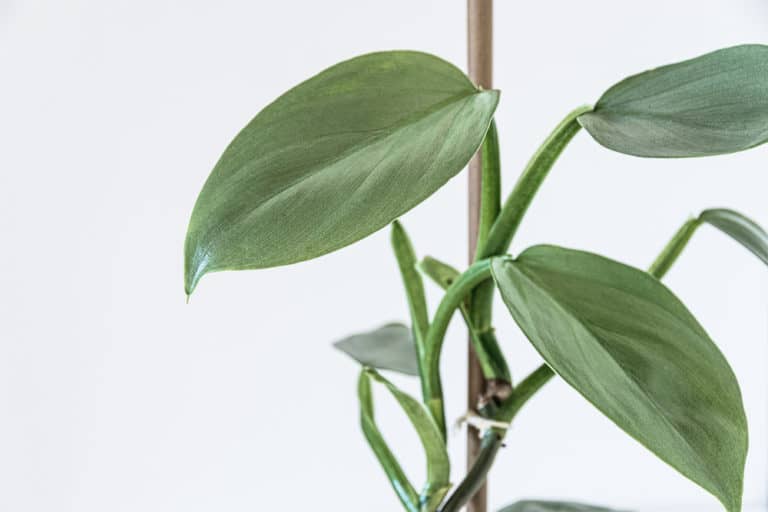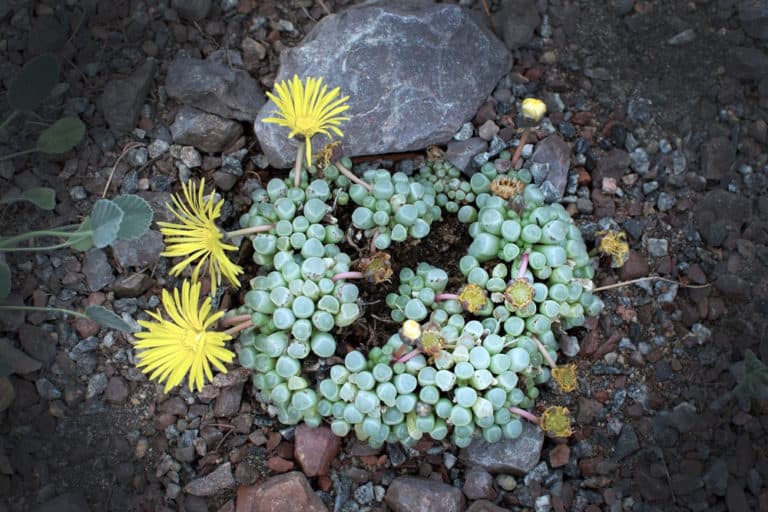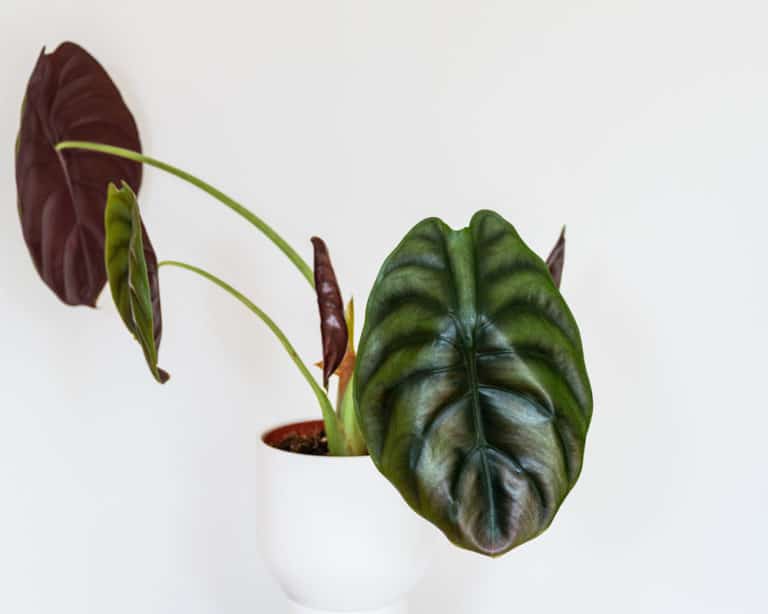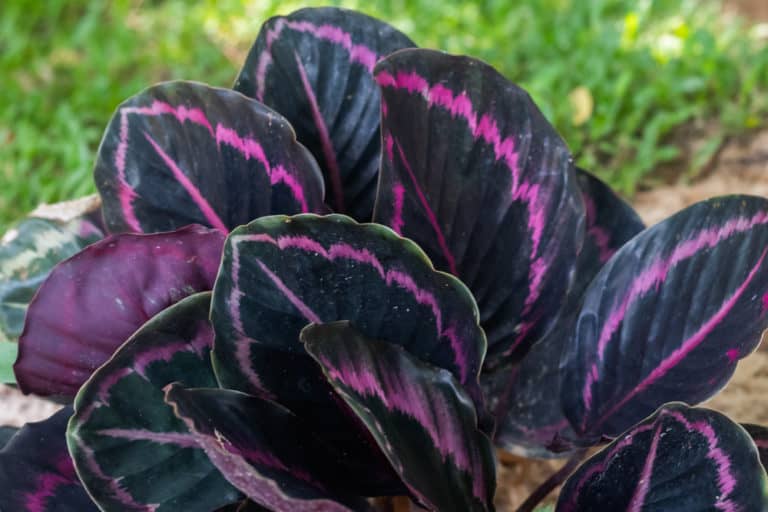Greenovia Dodrantalis ‘Mountain Rose’ Care Guide (2024)
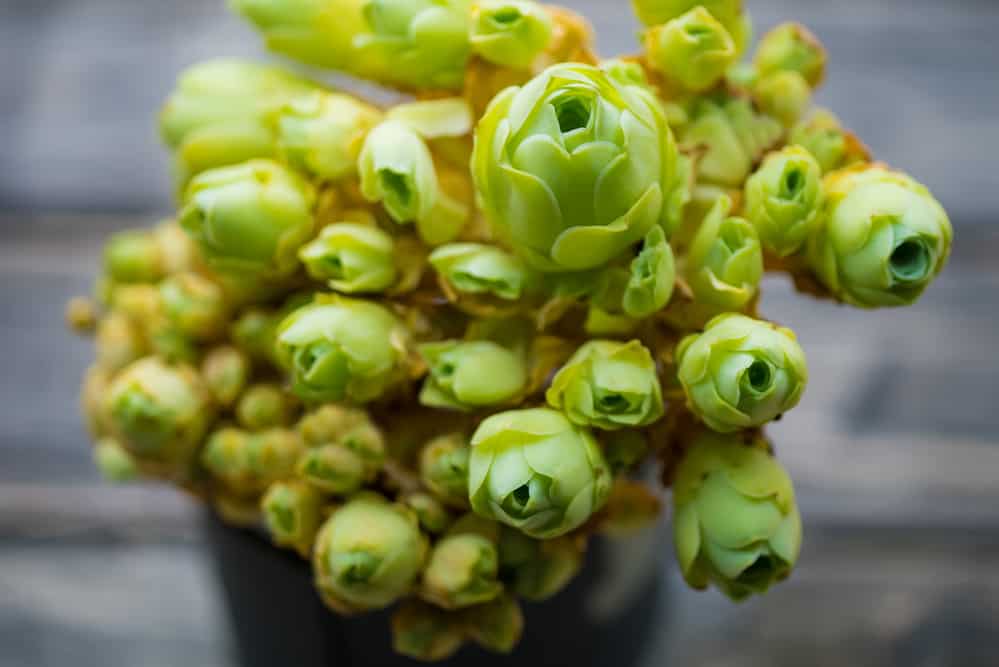
Who gets tired of succulents? The variety of species you’ll find under this plant type is surely surprising. They always treat us with new, unique, and stunning plants. Among them is the Greenovia dodrantalis, a succulent species originating from the Canary Islands. Let’s find out how this species will make a perfect houseplant.
Plant Profile
Common Name: Mountain rose succulent
Scientific Name: Greenovia dodrantalis
Type: Succulent
Origin: Canary Islands, east coast of Spain
Habitat: Rocky crevices and coniferous forests of canyons
Size: About 6 inches tall and 2.4 inches wide when mature
Toxicity: Toxic to pets and human
Colors: Grayish green
Blooms: Yellow flowers during spring
Plant Care
Light: Full sun
Watering: Medium
Temperature: 65 to 75oC (18 to 24oC)
USDA Zone: 10a to 11b
Air humidity: Medium to high
Soil pH: 7 (neutral)
Fertilizing: Half strength balanced fertilizer every month (growing season)
Propagation: Cuttings, leaves, offsets, or seeds
Re-Potting: Once every few years
Pruning: Little to no pruning
What’s Unique About Greenovia dodrantalis?
A rose and succulent in one, the Greenovia dodrantalis shape is one thing that makes this plant unique and adorable. Naturally, they dwell in the rocky crevices and coniferous forests of canyons. This one is considered a rare collection and you’d be lucky to have acquired a piece or two.
Appearance
By looking at the Greenovia dodrantalis appearance, you’d easily visualize the shape of a closed rose flower. It’s just that instead of flower petals, those are formed out of fleshy leaves. Luckily, you’d find no thorns in its body making it quite easy to handle unlike a real bushy rose plant.
Foliage
The foliage of Greenovia dodrantalis is grayish green in color, pretty much like the other succulents you see. Upon touching, you’d feel that each leaf has a smooth and fleshy texture. The leaves are oval in shape. As they layer after each other, they seem to be like rose petals forming a flower bud.
When the season is dry, these small rosettes remain closed which is probably a way to conserve moisture. That unique appearance is the reason why Greenovia dodrantalis common name is termed as mountain rose succulent. Anyone would love to have this plant added to their homes.
Flowering
On top of this rose shaped succulent is a long, thick stalk bearing the clusters of yellow flowers. Expect them to appear during the spring season. They make the plant look even more stunning with those blooms.
Each rosette produces one stalk. So if you have many rosettes in one pot, there’ll be more flowers to see when the season comes. However, Greenovia dodrantalis flowering happens only once in its lifetime. This means that a rosette will eventually die after it flowers. Don’t be surprised when this happens.
Just make sure to save the seeds so you have something to propagate.
Size and Growth
The size of Greenovia Dodrentalis is normally compact and low. When mature, they could grow only up to 6 inches tall and 2.4 inches wide. It makes this plant handy especially if potted. And because it’s low growing, you can use it as ground cover too.
A greenovia rose succulent will grow fast given the ideal environmental conditions. It will produce several pups at the base of the mother plant making it appear bulky. It can easily fill a small sized pot. And it can also spread widely if planted on ground. This succulent is indeed generous in its growth.
Fragrance
Owners have reported positive news with regard to Greenovia dodrantalis fragrance. Thus, they confirm that those tiny, yellow flowers it produces are sweet scented. This makes this succulent even more appealing. Apart from its attractive appearance, there’s a bonus fragrance that’s emitted from its blooms. What an awesome treat, right?
So, make sure to catch for the next Greenovia dodrantalis blooming season. Take time to observe and smell those tiny flowers and see for yourself. They last for several weeks so you have ample time to enjoy its fragrance before it totally dies. Just be careful if you have allergic rhinitis. The pollen in those flowers can easily trigger your condition.
Toxicity
Although these rose-shaped succulents are gorgeous, don’t forget to take extra caution. This plant is considered toxic and can potentially harm your pets or children. If you’re placing it indoors, make sure to place it in a safe spot. The last thing we want is to risk someone else’s health.
For Humans
The Greenovia dodrantalis plant is completely not edible. Make sure that’s clear to your children. Yes, the leaves may look innocent and pleasant to touch, but they contain toxic properties that shouldn’t be ingested by humans. So, be careful!
Putting labels on your Greenovia dodrantalis plants is always a good idea. That’s a practical way to warn your visitors if they ever get intrigued by the plant. You can just attach a tag which says, “Warning: I’m Toxic”, or “Keep away from me”, or “Don’t touch me”. Whatever creative way you think is best to send the message, do it.
For Pets
The pets are another story, however. It’s obvious that our dogs and cats couldn’t read the labels. What you can do is to provide a barrier around the pot of your Greenovia dodrantalis succulent. That will serve as protection to keep your fur babies away from the plant. You can use anti-cat or anti-dog prickly pads so they couldn’t get near.
Although it may seem a little overprotective, it’s better to be prepared. Greenovia dodrantalis toxicity isn’t something that we can take for granted. As much as we love our plants, we couldn’t risk the lives of the pets and children around us.
Suggested Uses
Since the Greenovia dodrantalis growth rate is fast, it’s beneficial to have it planted on bare ground spaces. Your outdoor landscape will easily be filled if you plant it with this succulent. It’s also a good thing that it has a compact size. It would stay close to the ground as much as possible, saving you the effort of regular pruning.
For indoors, it is best to grow Greenovia dodrantalis in pots and small containers. It will surely make a lovely ornament to accent a table or window. It will also suit your office areas like the cabinet tops. Some even hang their succulents.
Greenovia dodrantalis Care
Now you’re probably wondering about the details on how to care for Greenovia dodrantalis. Thankfully, the plant isn’t hard to please. It has almost the same requirements as the other succulents you’ve tended to. If well-taken care of, this plant will certainly do well and reward you with a lush foliage.
Light
It’s critical that you pay attention to the Greenovia dodrantalis light requirements. This plant loves to be under a full sun condition. It will certainly do well in an outdoor landscape that receives ample amounts of light throughout the day. However, strong intensities of light like during summer can be detrimental. So, keep watching.
If you’re keeping it indoors, find the location that’s the brightest. Make sure it’s placed in a well-lit area. Otherwise, your rose mountain will shed its leaves. If you’re transitioning the plant from indoors to outdoors, do it slowly to avoid shock. The plant would need to acclimatize first.
Watering
Watering of Greenovia dodrantalis can be quite tricky. If you’re not careful, you may end up killing your own plant due to overwatering. Since it’s succulent, it wouldn’t require much water to start with. When the top half of the soil gets dry, that’s the time to water.
It matters to check the soil from time to time. Generally, more frequent watering is required during the hotter seasons than during the cold ones. Always make sure that the water drains out of the container to avoid them from pooling and drowning the roots. This will prevent the occurence of diseases.
Temperature
The ideal Greenovia dodrantalis temperature ranges from 65 to 75oC (18 to 24oC). If you notice, this is quite a warm condition. Thus, you should do away with locations that are constantly exposed to low temperatures or even those that are drafty.
You should watch out for seasons where there are freezing temperatures. If your rose succulent is placed outdoors, you would have to bring it inside your homes. Provide insulation if needed. Extremely low temperatures could freeze the fleshy tissues of the leaves. That would lead to irreversible damage to the plant. Once thawed, you’d see brown lesions on the leaf surface.
Air Humidity
The requirement for Greenovia dodrantalis humidity is a little different from the other succulents. A medium to high humidity level is ideal for this plant. This means that it loves to have extra moisture in the air rather than a dry one. So, it isn’t good to leave it in an arid location.
Your average humidity level at home will surely suffice. However, you may have to add a little misting in the morning when the humidity drops to low. How will you know? A hygrometer device will help you determine. Make sure that you have one hanging by your door.
Soil
To properly mix a Greenovia dodrantalis soil, you have to start with a succulent or cacti mix. But, there’s a need to add a little loam so the medium will retain more moisture. Check for its pH using a handheld pH meter. It must be at a neutral (pH = 7) level.
We always advise to use a sterilized potting mix for your potted plants. This shall help prevent the dangers of developing soil-borne diseases. Don’t forget to test its drainage capacity as well by pouring water into it. The potting mix should drain the excess water within a few minutes.
Fertilizing
Although it is not always required that you apply fertilizer, there may be times when you have to. This, of course, depends on the growth of your rose succulent. If you think it needs a little boost, then apply half strength balanced fertilizer every month. Stop when you’ve seen considerable results.
The right timing for fertilization is during the growing season only. Dormant seasons like winter are not an ideal period to fertilize. Your succulent has very little activity at this point so it won’t utilize as much nutrients.
Some fertilizers would build up salts in the soil through time. Get rid of them by continuously pouring water on the soil until they’re drained off.
Propagation
There are several methods to consider when it comes to propagation of Greenovia dodrantalis.
You can use cuttings, leaves, offsets or seeds. It depends on which part is more available for planting. Just remember to choose the healthiest and most vigorous part when propagating.
Use of Greenovia dodrantalis seeds will require the most time and effort. It will take you a long time to produce a mature succulent. If you’re a newbie, this method might easily frustrate you. So, if you have mature leaves or offsets available, use them instead. All you need is to detach them from the mother plant and pot separately. They will develop their own roots in time.
Re-Potting
Although this succulent is fast-growing, it loves to be pot bound. So, re-potting Greenovia dodrantalis isn’t a regular activity to do. In fact, it may take a few years before it will require a transfer to a larger container.
If you’re constantly removing offsets, you can just maintain the mother plant in its original pot. However, you have to replace the depleted soil with a fresh mix. If you want to replace the container, choose the one that’s only slightly bigger than the previous. Small containers work best for succulent. This is because they have shallow root systems. Light soil is enough for anchorage.
Pruning
The only things involved in pruning Greenovia dodrantalis is the removal of dead or aged leaves as well as mature offshoots (propagation). You should also get rid of the diseased parts. This management practice won’t require much effort unlike with bushy species.
It’s normal for the lower leaves of the succulent to dry as it ages. You can just remove them with your bare hands but you have to be careful. We do not want to damage the rest of the plant, don’t we? Other than these things, there are no other pruning activities involved. It’s that simple and undemanding.
Greenovia dodrantalis Common Problems
There are a few Greenovia dodrantalis problems that you will encounter when growing this plant. It might be challenging for newbies to have to face such problems. But we’ll give you these tips to overcome these problems. There are a few pests and diseases to expect but if you manage them well, your plant will survive.
Pests
You would spot Greenovia dodrantalis pests early on if you constantly check on your plant. Normally, small organisms like spider mites, mealy bugs, and aphids would find shelter on the undersides of its leaves. You can wipe them off with a cotton dipped in alcohol until you get rid of them completely.
This may be extra work but you have to do it several times to prevent infestation on the plant. Diluted neem oil sprays or dishwashing liquids will also do the work. You just have to be faithful in spraying so they don’t form colonies. They can be a real threat once they’ve multiplied.
Diseases
Expect powdery mildew, white rust, and leaf spots to be part of Greenovia dodrantalis diseases. These are caused by pathogens that normally flourish during moist and cold conditions. That’s why we’ve made a point earlier not to overwater your succulent.
If you notice that your plant is diseased, isolate it immediately. Disease-causing organisms have a habit of transferring from one host to another. This is bad if you have a number of the same species in one place. Treat the plant with appropriate chemicals and make sure the growing conditions are optimal. Once healed, you can bring the plant back.
Growing Problems
Overwatering is the only serious problem you’ll encounter while growing Greenovia dodrantalis. Succulents become susceptible to diseases if they’re stressed. As much as possible, provide the best growing conditions like sufficient light, enough humidity, favorable temperature and good potting mix.
Greenovia dodrantalis care shouldn’t stress you out. It will exist pretty much on its own without so much fuss. Whether you are a newbie or experienced gardener, growing this plant won’t give you much headache. So now, start looking for a pot or two of this rose succulent. You wouldn’t want to miss the beauty of this rare piece collection.
FAQ
Can you propagate Greenovia dodrantalis?
Yes. You can use either leaf cuttings, offsets, or seeds to multiply a Greenovia dodrantalis species. Whatever propagation method works best for you, do it.
How do you care for a mountain rose succulent?
Provide ample light, medium amount of water, average humidity, warm temperature and a draining soil mix. Such are the basic things needed by a rose succulent.
Are rose succulents real?
Although it may look like faux, rose succulent is 100% real. However, this species is quite rare and difficult to find in nature. That’s why you’ll encounter it mostly in pictures only.

